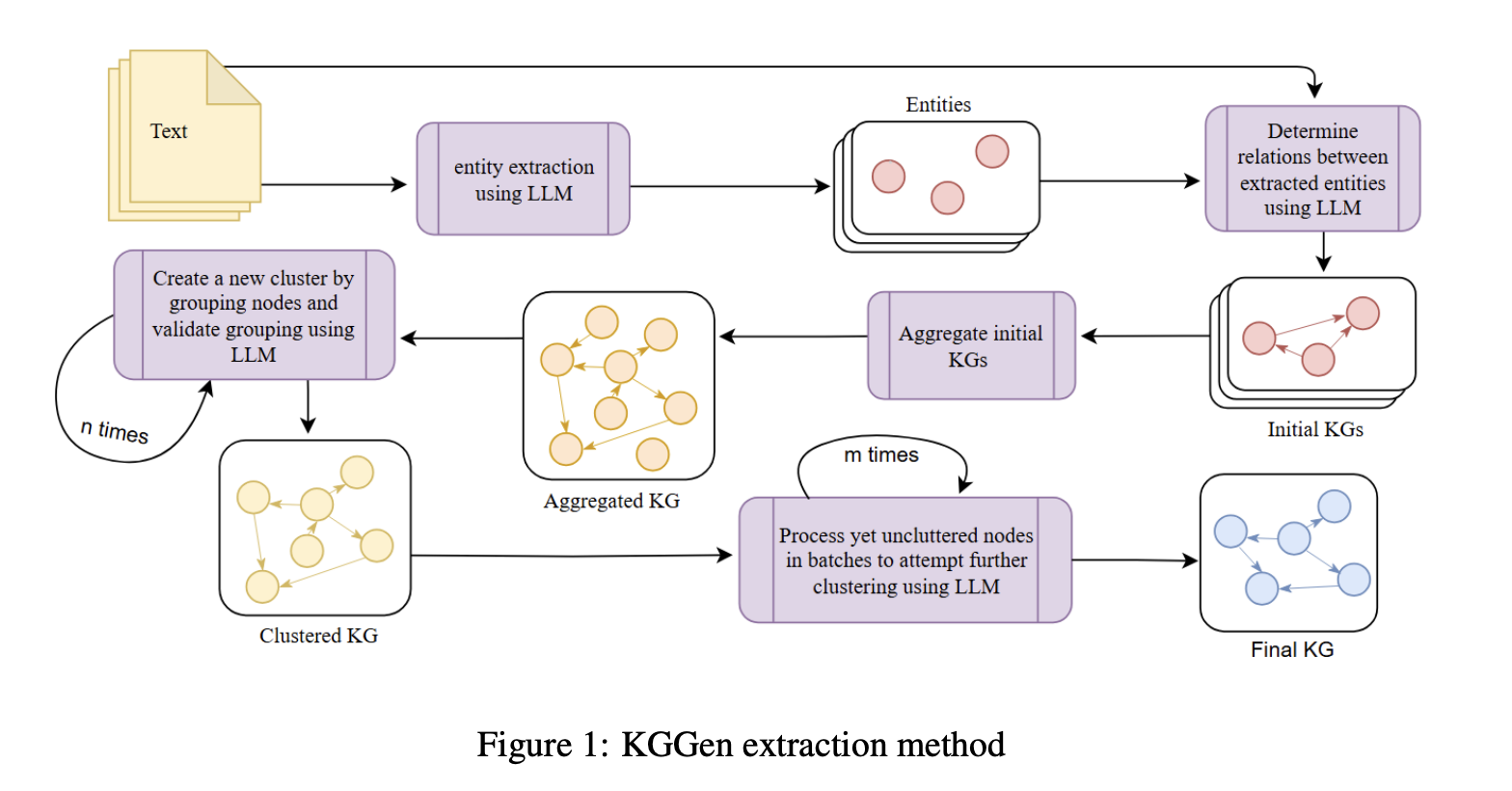
Understanding Knowledge Graphs and Their Challenges
Knowledge graphs (KGs) are essential for AI applications, but they often lack important connections, making them less effective. Established KGs like DBpedia and Wikidata miss key entity relationships, which limits their usefulness in tasks like retrieval-augmented generation (RAG). Traditional extraction methods often result in sparse graphs with missing connections or redundant information, complicating the extraction of high-quality structured knowledge from unstructured text.
Importance of Overcoming Challenges
Addressing these challenges is crucial for enhancing knowledge retrieval, reasoning, and insights through AI.
Current Extraction Methods and Their Limitations
Two leading methods for extracting KGs from text are Open Information Extraction (OpenIE) and GraphRAG. OpenIE generates structured triples but often creates complex and redundant nodes, while GraphRAG improves entity linking but still produces sparse graphs. Both methods struggle with consistency and connectivity, making high-quality KG extraction difficult.
Introducing KGGen: A New Solution
Researchers from Stanford University, the University of Toronto, and FAR AI have developed KGGen, a new text-to-KG generator. KGGen uses language models and clustering algorithms to extract structured knowledge from plain text effectively.
Key Features of KGGen
- Iterative Clustering: Merges synonymous entities and groups relations to create a more coherent KG.
- MINE Benchmark: The first standard measure for text-to-KG extraction performance, allowing for consistent evaluation.
- Modular Python Package: Includes modules for entity and relation extraction, aggregation, and clustering.
How KGGen Works
KGGen operates through a modular Python package that includes:
- Entity and Relation Extraction: Uses GPT-4o to create structured triples from unstructured text.
- Aggregation: Combines triples from various sources into a unified KG.
- Clustering: Enhances graph connectivity by disambiguating entities and clustering similar edges.
Performance and Impact
KGGen has shown impressive results, achieving an accuracy rate of 66.07%, significantly higher than GraphRAG (47.80%) and OpenIE (29.84%). This method improves extraction fidelity by 18% compared to existing techniques, resulting in denser and more informative graphs suitable for knowledge retrieval and AI reasoning.
Future Developments
KGGen represents a significant advancement in knowledge graph extraction, combining language model-based recognition with clustering techniques for better structured data. Future efforts will focus on refining clustering methods and expanding benchmark tests for larger datasets.
Get Involved
For more information, check out the Paper. Follow us on Twitter and join our 75k+ ML SubReddit community.
Transform Your Business with AI
Stay competitive by leveraging KGGen for knowledge graph extraction. Here’s how to get started:
- Identify Automation Opportunities: Find key customer interaction points that can benefit from AI.
- Define KPIs: Ensure measurable impacts on business outcomes.
- Select an AI Solution: Choose tools that meet your needs and allow for customization.
- Implement Gradually: Start with a pilot project, gather data, and expand AI usage wisely.
Contact Us
For AI KPI management advice, reach out at hello@itinai.com. For ongoing insights, follow us on Telegram or Twitter.
Explore AI Solutions
Discover how AI can enhance your sales processes and customer engagement at itinai.com.



























